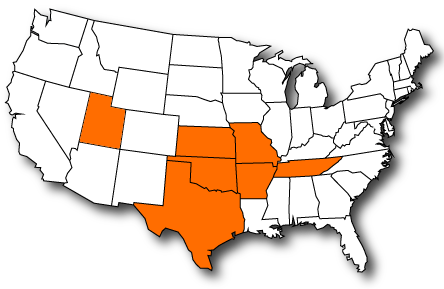Floods can be devastating natural disasters that can cause significant damage to homes, businesses, and communities. Tulsa, located in the heart of Oklahoma, is no stranger to the threat of flooding. With its position in “Tornado Alley” and its susceptibility to flash floods, having the right flood insurance is crucial for residents and businesses in Tulsa.
In this comprehensive guide, we’ll explore flood protection in Tulsa, the importance of flood insurance, flood risk assessment, insurance providers, costs, floodplain management, flood zone determination, the claim process, and measures for flood risk reduction.
Flood Protection in Tulsa
Tulsa is located in a region that experiences a mix of weather patterns, including severe storms, heavy rainfall, and flash floods. Given its vulnerability, flood protection in Tulsa is essential. To ensure the safety of your property and financial security in the event of a flood, obtaining flood insurance is a prudent choice.
While standard homeowners or renters insurance policies cover a range of perils, they typically do not include flood damage. Therefore, it is essential for homeowners and businesses in Tulsa to understand the significance of flood insurance.
Tulsa Flood Coverage
Flood insurance is a separate policy designed specifically to cover damage caused by flooding. It is commonly provided through the National Flood Insurance Program (NFIP), which is managed by the Federal Emergency Management Agency (FEMA).
In Tulsa, homeowners, renters, and business owners can purchase flood insurance to protect their properties and assets. NFIP policies are available to property owners and renters alike, providing coverage for both the structure and contents of a building.
Flood Risk Assessment in Tulsa
Understanding flood risk is crucial in Tulsa, as it helps residents and businesses assess their vulnerability to flooding. Flood risk assessment involves evaluating various factors, including the property’s location, elevation, proximity to water bodies, and historical flood data.
Tulsa’s geographical position means that several neighborhoods are at higher risk for flooding. Areas near the Arkansas River, Mingo Creek, and other water bodies are particularly susceptible to flooding. Conducting a flood risk assessment is the first step in determining the necessity of flood insurance.
Tulsa Flood Insurance Policy
When considering flood insurance in Tulsa, it’s important to understand the specifics of the policy. Flood insurance typically covers structural damage to the building and the contents within. This may include damage to the foundation, walls, plumbing, electrical systems, appliances, and personal belongings. It’s essential to read the policy carefully to know the extent of coverage, deductibles, and other terms and conditions. Additionally, you should be aware of any waiting periods before the policy becomes effective.
Tulsa Flood Insurance Providers
In Tulsa, flood insurance can be obtained through the NFIP, but private insurers also offer flood insurance policies. The availability of private insurance options has expanded in recent years, providing more choices for residents and businesses. Working with a trusted insurance provider can help you find the best policy that suits your needs and budget.
Flood Insurance Costs in Tulsa
The cost of flood insurance in Tulsa can vary depending on several factors. These include the property’s elevation, its location in or outside a designated flood zone, the coverage limits, and the chosen deductible. Policies for high-risk areas are typically more expensive than those for properties in lower-risk zones. A few hundred to several thousand dollars in premiums can be paid yearly. It’s advisable to obtain quotes from multiple insurers to find the most competitive rates.
Tulsa Floodplain Management
Floodplain management is a key component of reducing flood risk in Tulsa. Local authorities and agencies work to establish regulations and guidelines for development in flood-prone areas. These measures aim to minimize flood damage by restricting construction in high-risk zones and promoting mitigation strategies, such as building elevations, levees, and flood walls. Staying informed about local floodplain management regulations is important for homeowners and developers.
Tulsa Flood Zone Determination
Tulsa, like many communities, has established flood zones based on the likelihood of flooding. These zones are designated as Special Flood Hazard Areas (SFHAs) and are depicted on Flood Insurance Rate Maps (FIRMs). Properties located within SFHAs are at a higher risk of flooding and are required to have flood insurance if they have a federally backed-mortgage. Determining your property’s flood zone is an important step in understanding your flood risk and insurance requirements.
Flood Insurance Claim Process
In the unfortunate event of a flood, it’s essential to understand the flood insurance claim process in Tulsa. When damage occurs, policyholders should contact their insurance provider as soon as possible to initiate the claim.
Documenting the damage with photos and keeping records of expenses related to the cleanup and recovery process is crucial. An adjuster will be sent to assess the damage and determine the payout. Being well-prepared and prompt in your actions can expedite the claims process.
Tulsa Flood Risk Reduction
Preventing and mitigating flood risk in Tulsa is a shared responsibility. Individuals, communities, and local authorities can take several steps to reduce the impact of flooding. These measures include:
- Elevation: Elevating buildings in flood-prone areas can significantly reduce the risk of damage.
- Flood Barriers: Installing flood barriers or flood walls can protect properties from rising waters.
- Levees and Dams: These infrastructure projects help control water flow and prevent flooding in certain areas.
- Drainage Systems: Maintaining and improving drainage systems can help redirect water away from populated areas.
- Community Education: Informing residents about flood risks, evacuation plans, and emergency preparedness is vital for minimizing harm during a flood.
- Land Use Planning: Careful land use planning can reduce the construction of properties in high-risk areas.
In conclusion, flood insurance is a critical component of disaster preparedness in Tulsa, given the city’s vulnerability to flooding. Understanding flood risk, having the right insurance policy, and taking proactive measures for risk reduction are all vital aspects of protecting your property and assets from flood damage.
By being informed and prepared, you can ensure that your family or business remains resilient in the face of potential flooding, safeguarding your financial future and peace of mind. Please note that flood insurance requirements and options may change, so it’s essential to stay updated on the latest information and regulations from FEMA and local authorities in Tulsa, OK.
Don’t leave your home’s safety to chance. Protect your property with the right flood insurance. Request a free quote today and safeguard your future.


